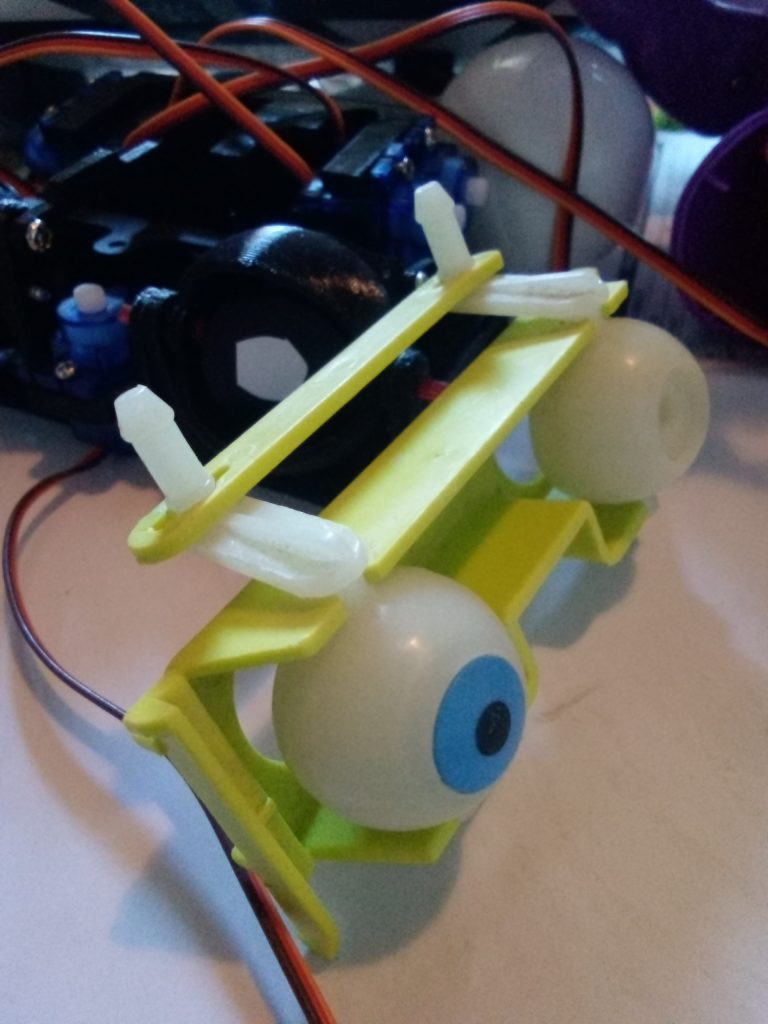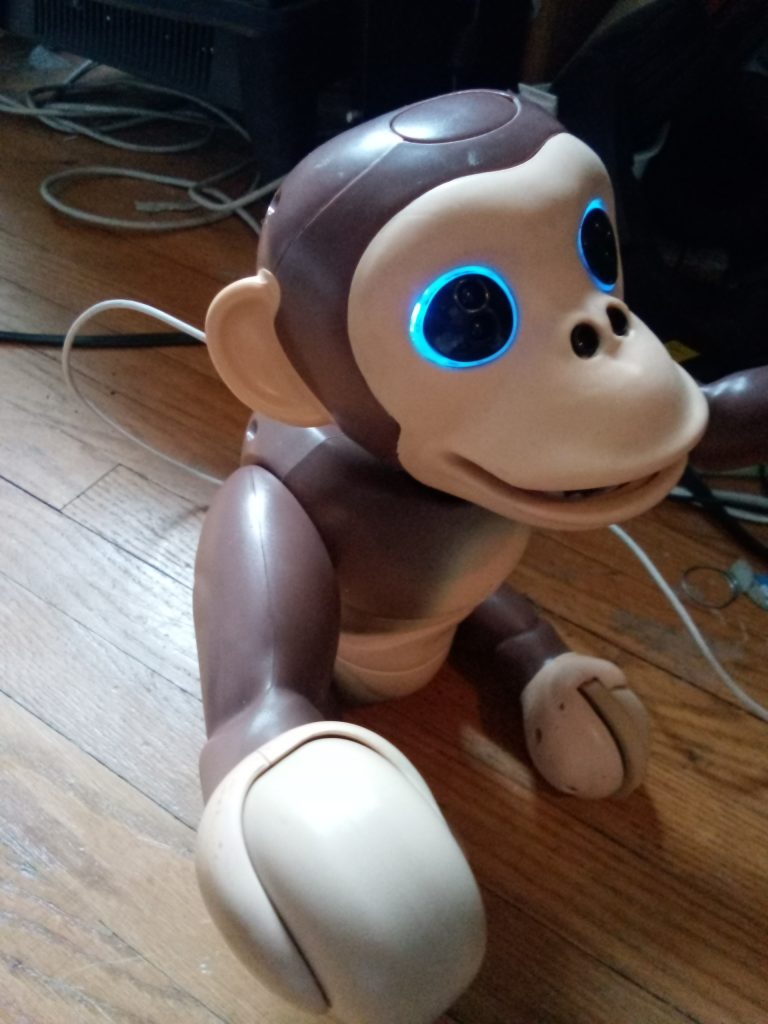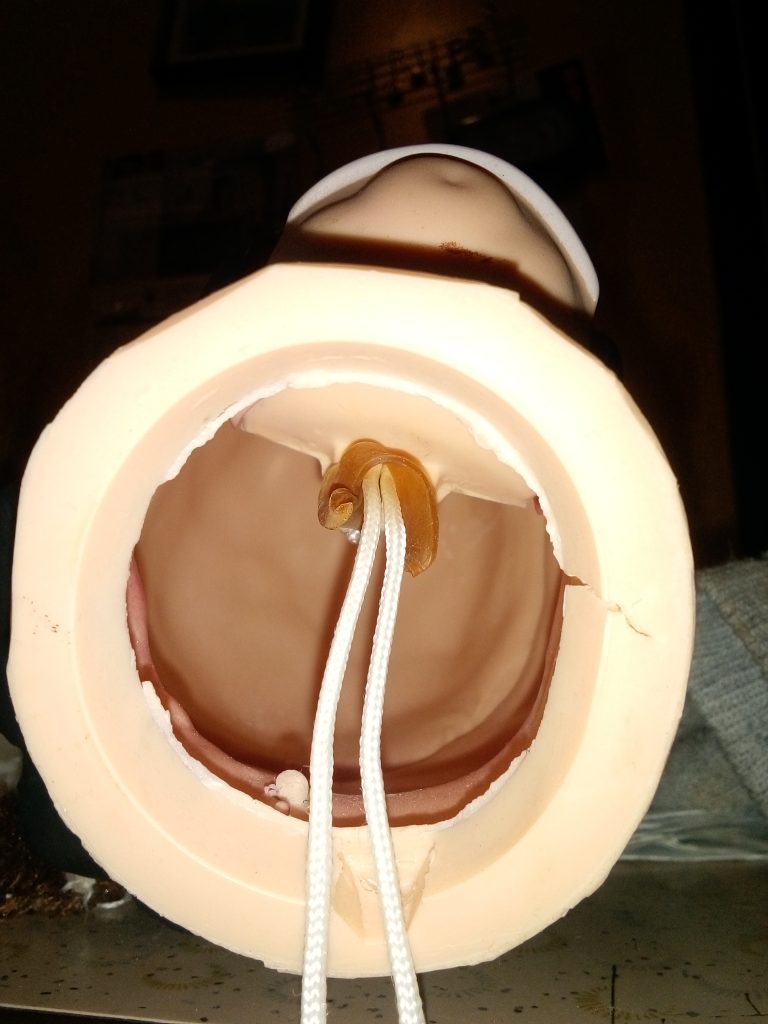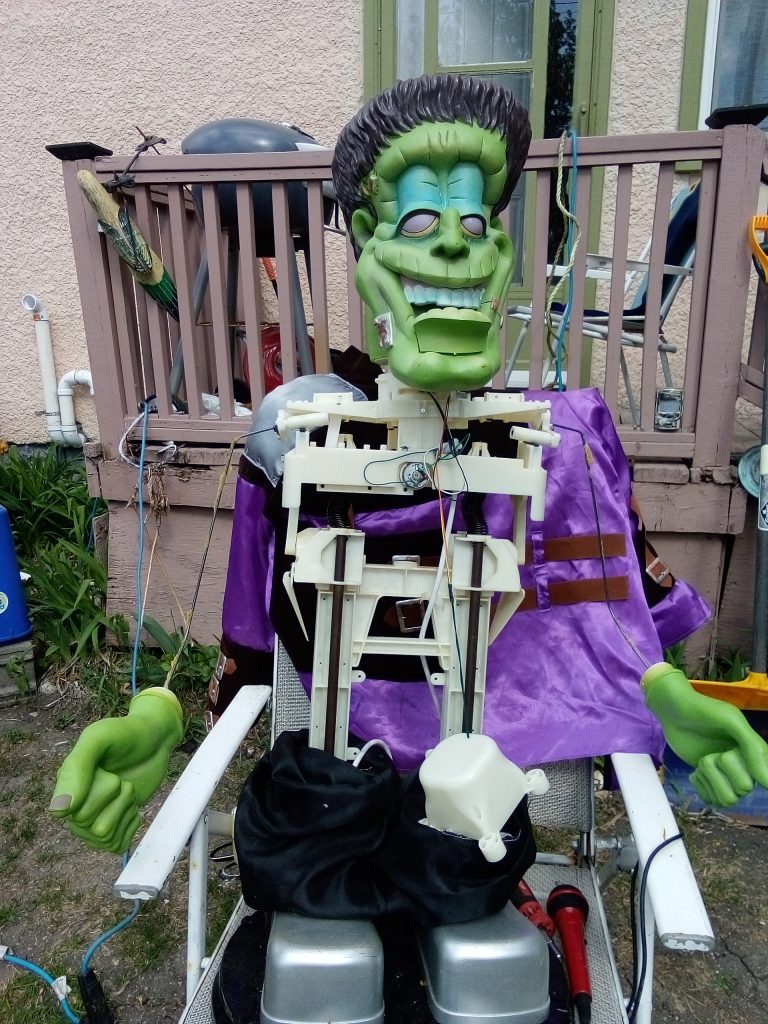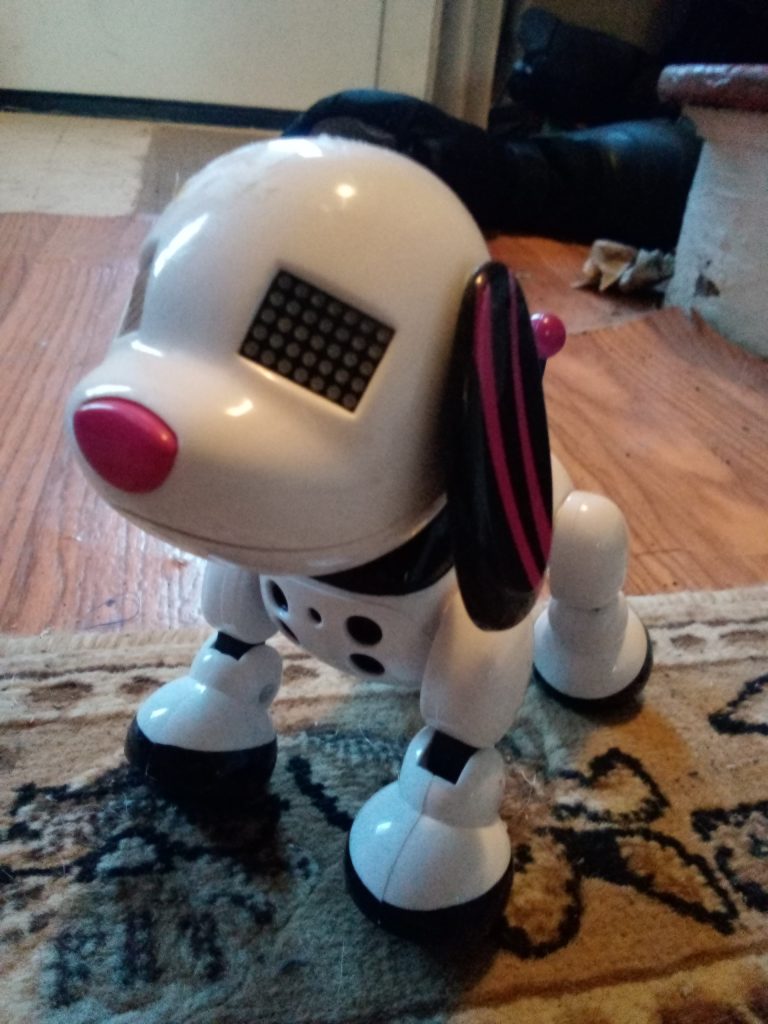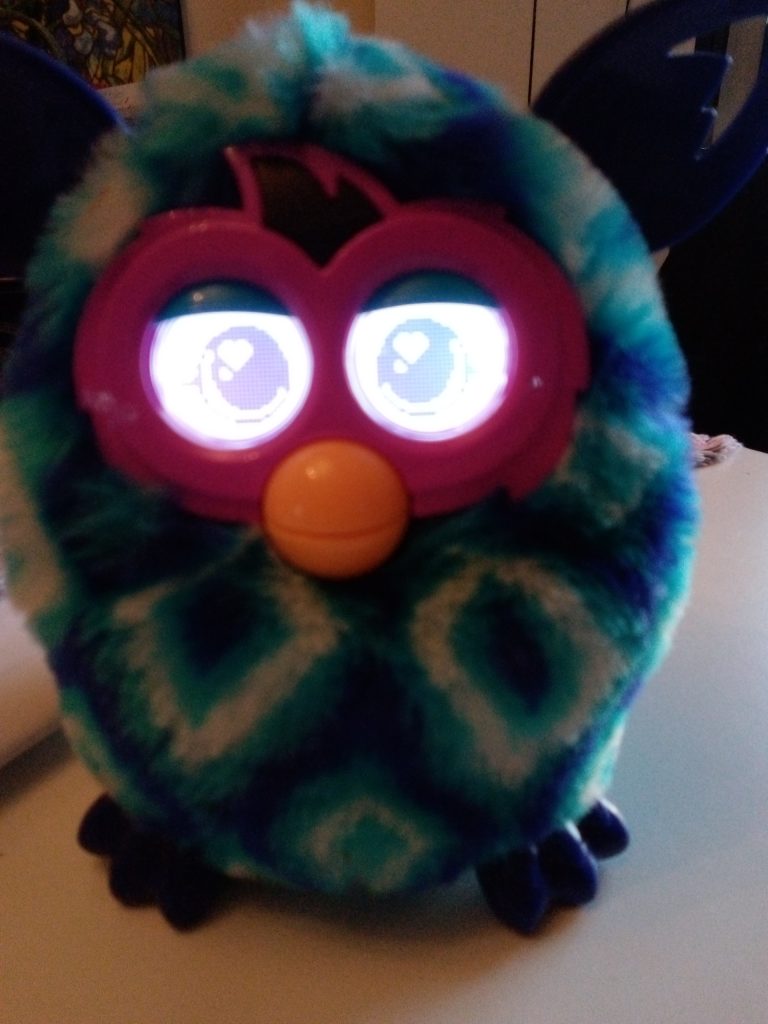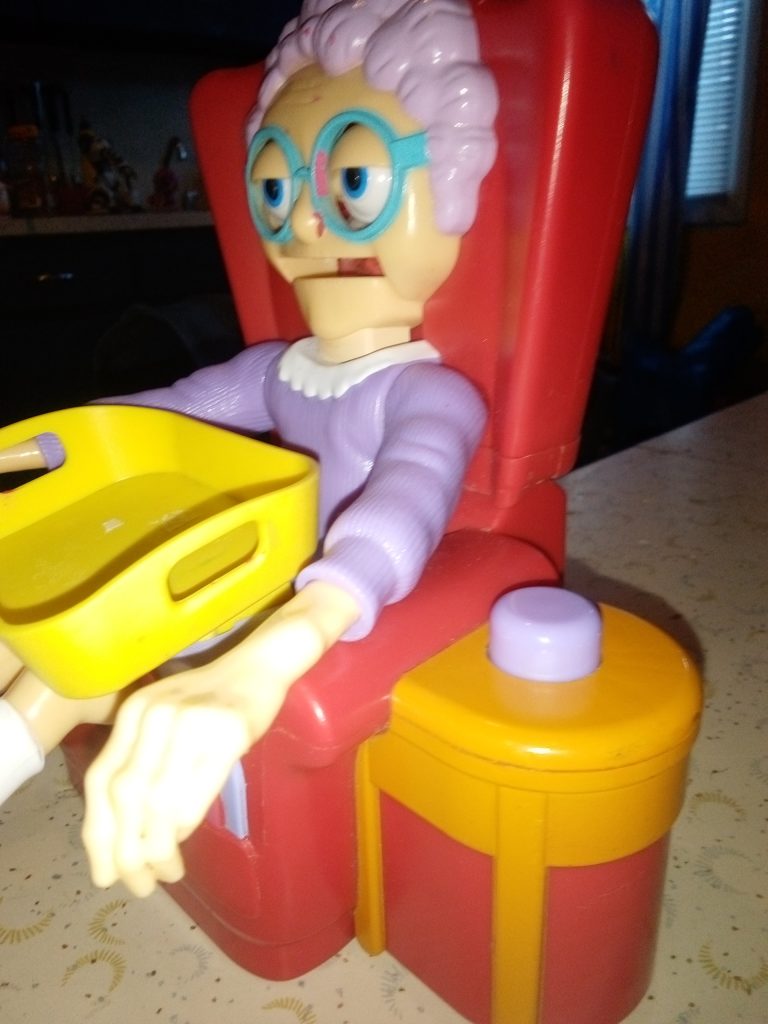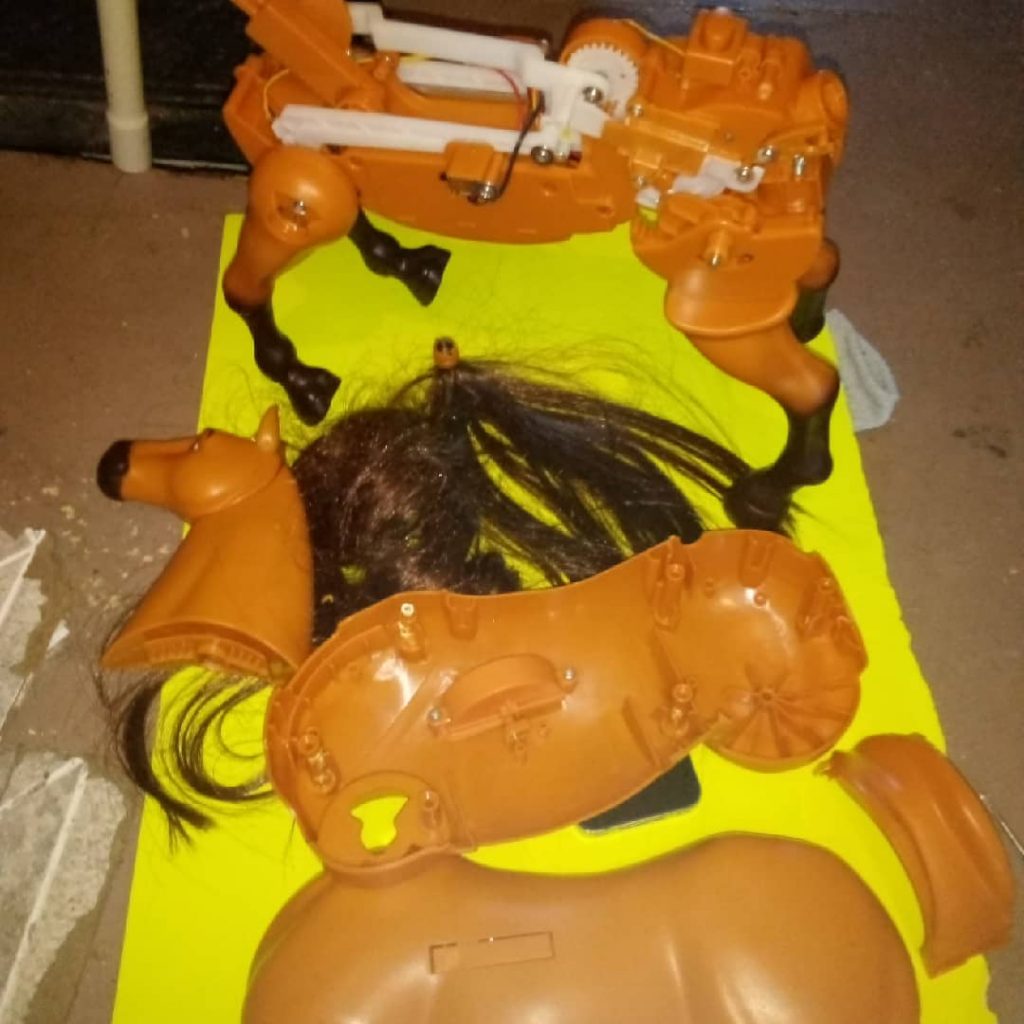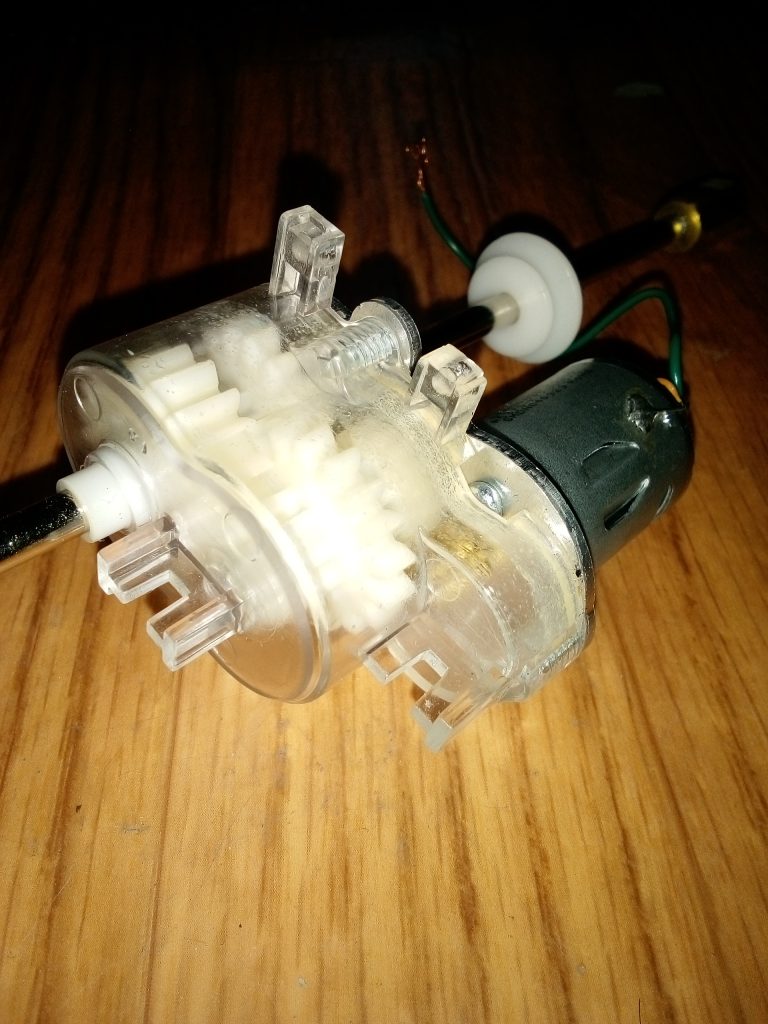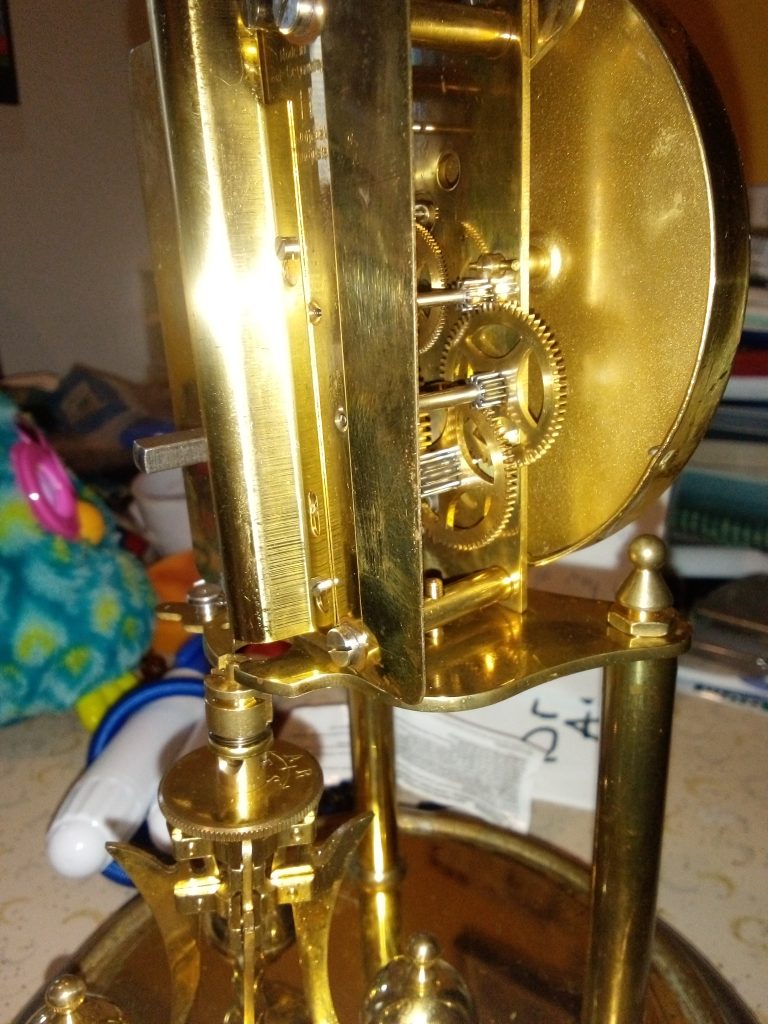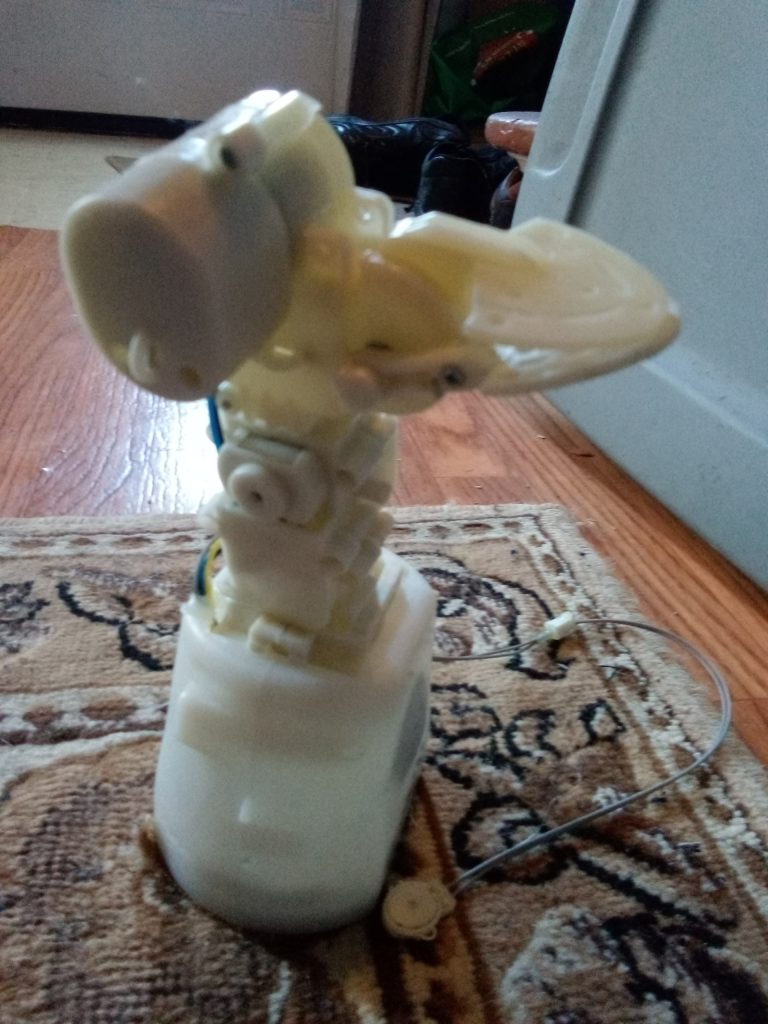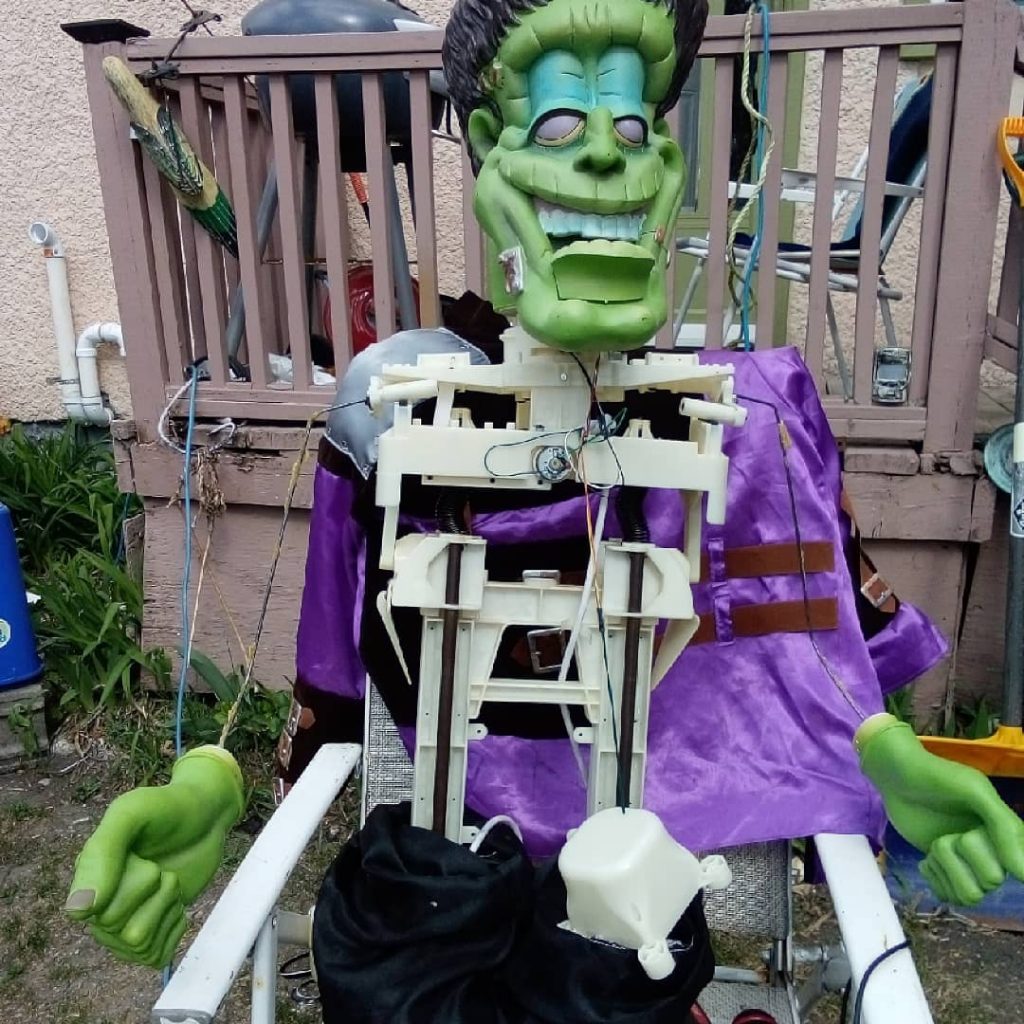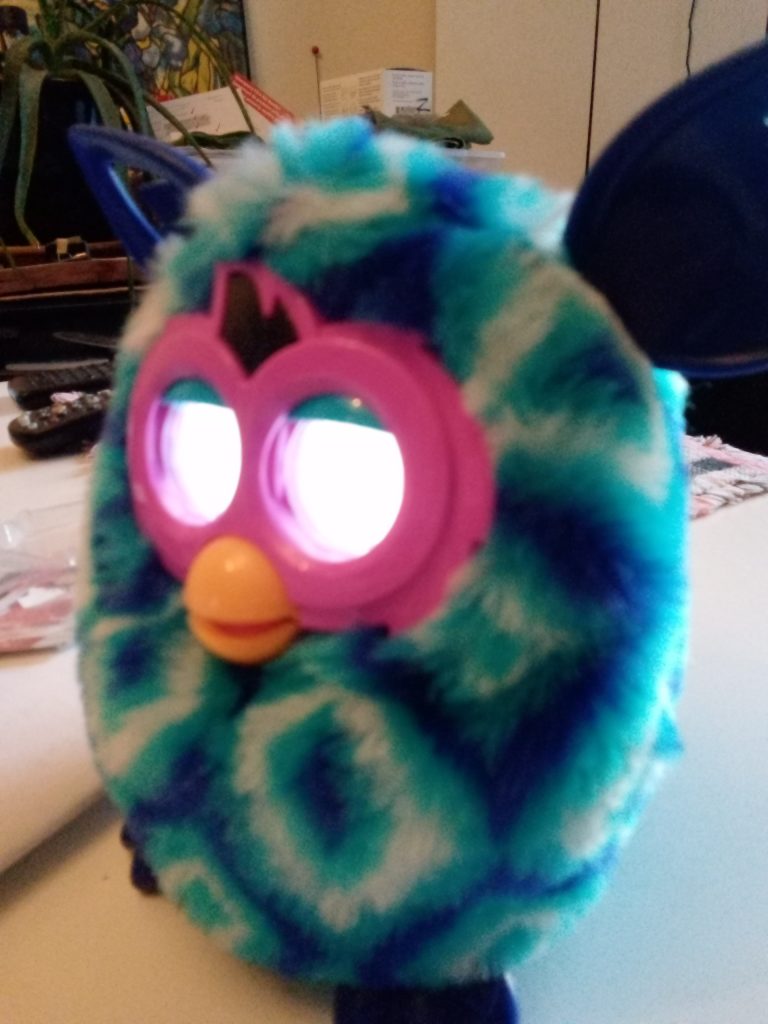It is fascinating to look at the quality of artificial eyes that you can find on the Internet.
People teach on youtube how to make the perfect looking human size eyeball with proper painting and actual gluing fine string on the eyeball to appear like veins.
So lets talk about the eye a little bit and the kind of movement one would need in a humanoid and how to achieve that with mechanical movements.
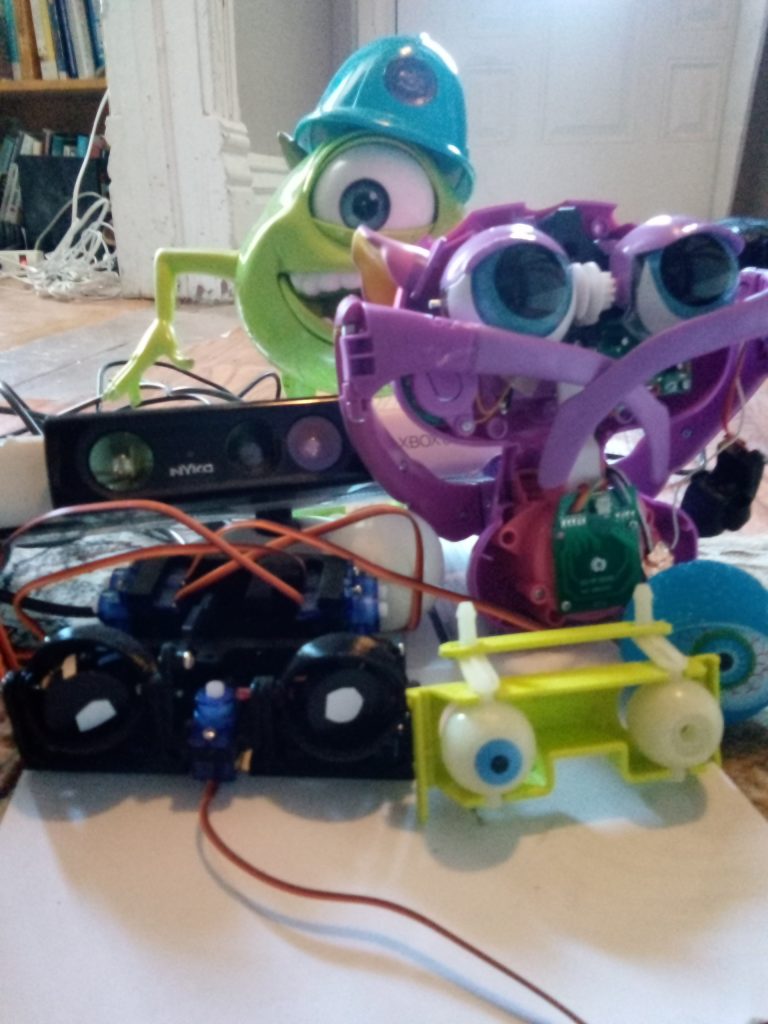
An eye fits in an eye socket and can move just about all over (even independently if you train yourself) in a human but in most robots it will move left to right and up and down. On top of the eye you will have an upper and lower eyelid that can move. You may need 4 to 8 motors to move the eyes and lids.
Even above that you may want to move the eyebrow…and maybe move the cheeks…and on and on if you want ultra-realism.
So when it comes to faking a moving eye robot or simply a puppet or animatronic, we can start off by looking at a how a ventriloquists puppet eye would move and then gradually talk about making the eyes move with servos. You could have 4 or 6 servos trying to move the eyes and the lids alone.
The 1998 Furby uses just one motor which does several things including opening and closing the eyelid which covers two half balls attached to a holding mechanism. The 2005 Furby also had moving eyeballs but the 2014 Furby and most cheap electronic dolls today with eyes will go for the digital flashing eyeballs that can be programmed to show words or pictures and do not have the more expensive to produce analog moving mechanical eyeballs.
If you haven’t seen many moving eye robot like creatures you would be impressed enough just to see the Furby blinking and singing. .
Usually with early animatronics many different facial features would be attached to the same mechanism or gearing and would move along with each other in some realistic manner.
This is why a side hobby in cucko clock repair or old watch repair comes in handy so you can see how the gears work together to make the bird come out and the time to change.
Robot eyeballs for humanoids are usuually a little smaller than ping pong balls and they are cut in half and are then somehow attached to a rod or rods and then with linkages to one or more servo motors to be later controlled by a micro controller like the Arduino or a computer like the Raspberry pi with the proper software. Some eyeballs have a closed flat end and others are open but you want to go for light weight so it doesn’t put much strain on the servos.
Check out the amazing Youtube video on how the Hollywood movie “World’s End” created one of the most realistic human heads with moving eyes/jaws. https://www.youtube.com/watch?v=E0QyAy2g_MY
You could make an eyeball out of clay and bake it and then insert a cardboard iris in the front and then a plastic lens on top of it and add some red sewing thread to look like veins.
But usually you sould stick to plastic since it is lighter and you probably want it hollow and be able to attach the mechanism arm to the side and/or top of the eyeball.
Some old school ventrioloquists in the 1950s would add a feature to their puppet which would allow them to make the puppet blink only one eye usually to wink at an atractive woman for humor.
It takes a bit more planning in the programming and the mechanical design phase to make the mechanism for the eye so that one set of eyelids will blink independent of the other.
You also need to consider how to put the eye mechanism in the head by either cutting a removable plate in a manequin head from the back or installing them from the front and covering the whole head with artificial skin of latex or rubber.
Many people buy old manequin heads or the Wowwee Elvis Alive doll used for $350 and remove the skin and add new Arduino to control the moving mouth and eyeball mechanism inside.
Now if you are building your own humanoid you will hopefully be relying on what has been done in the past and find some eye mechanism designs on youtube or on sites like instructables or thiniverse and get the 3d files and print them yourself or find a company to print them for you.
With mouth movements here again look at simple robot toys or ventrioloquist puppets for ideas.
The 1998 Furby and some older dolls had the feature that you could feed them so that when something like a spoon or finger was placed on the tongue the mouth would move and the doll would say something through the speaker like “yum yum that tastes good”.
You can get toy baby dolls like Baby Alive that have mechanisms for the mouth feeding and eyeball movements etc.
In terms of speech things get more complicated if you want the mouth to match what is being said or sung in some cases.
Some simple toy dolls like singing bears or Elvis dolls were sold with a circuit board that burned the sound file into a chip and played in synch with the mouth moving in approximately the right way.
This got better with certain dolls.
The Gemmy company has been making consumer level Halloween and Christmas talking and singing characters along with other things for over 30 years.
This Gemmy doll allows you to plug a tape player or cd into it or a microphone so that as soon as it gets some sound in it the mouth will move up and down to look similar to a singing or talking character.
One can buy more advanced equipment from this company to make a talking skull or any other creature.
Eventually you will add more sensors to make not just an animatronic character that moves its mouth but more of a robotic character that will sense when you asked it something or made a noise so it will react.
The robot could have a memory of hundreds of words or phrases or one could be using more advanced at and vision and speech systems to get the robot to behave more human like.
A great site that shows how to make arm movements on a mannequin is mfx-ezball/socket arm joint
